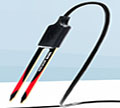Meter Environment
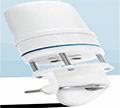
All-in-one plus one Our solution is an all-in-one weather station…plus one. The all-new ATMOS 41 weather station is the first affordable all-in-one weather station that fulfills all your weather monitoring needs but doesn’t restrain you when you want to do more.

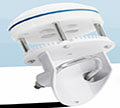
Measuring into stiff headwinds
When it comes to measuring wind, trade-offs have always been involved.
Cup anemometers can’t measure both wind speed and wind direction
(or low wind speeds, for that matter). They’re also prone to malfunction
since they all contain moving parts. Meanwhile, sonic anemometers
have always been too costly. Until now.
The best of both worlds The wind-tunnel-tested
ATMOS 22 ultrasonic anemometer delivers the best of both worlds.
It’s accurate at low wind speeds because there aren’t any moving
parts that cause friction or fail. And it’s inexpensive, especially
when you consider the low-energy design. Accuracy. Dependability.
Affordability. You get all three with the ATMOS 22.

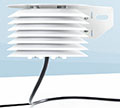
Microclimate measurement made simple If you’re doing a microclimate or evapotranspiration study, you may need up to four extra sensors to get important measurements that will benchmark your data. Not to mention you have to face the hassle of getting all those sensors integrated into your system. What you need is something simpler. With this in mind, we engineered the ATMOS 14 to be four sensors in one—air temperature, relative humidity, barometric pressure, and vapor pressure. And best of all, it’s plug and play with our ZL6 data logger.

The 10-cm long 10HS has three times the volume of influence compared to smaller sensors, measuring one liter of soil volume. Most soil sensors that measure this much volume are 20 cm or longer, causing installation headaches. The 10HS provides the perfect balance between volume of influence and sensor size, installing easily into the sidewall of a narrow trench. (Note: Want even easier installation? Many of our 10HS customers now prefer the TEROS 12, which also has a one-liter volume of influence, is even smaller, and can be installed with an installation tool for faster, more consistent, and mistake-proof installation.)

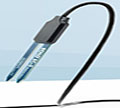
The EC-5 determines volumetric water content (VWC) by measuring the dielectric constant of the media using capacitance/frequency domain technology. Its 70 MHz frequency minimizes salinity and textural effects, making this sensor accurate in almost any soil or soilless media. Factory calibrations are included for mineral soils, potting soils, rockwool, and perlite.

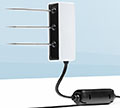
You need sensor longevity Soil can be highly variable in space, requiring numerous measurements and frustrating amounts of your research dollars. Not to mention the extra cost and hassle of replacement sensors if you need long-term data. Make long-term, large sensor networks simpler, longer-lasting, and more affordable with the ultra-dependable TEROS 12 soil moisture and temperature sensor.

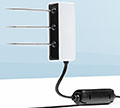
The culmination of our new TEROS water content line, the TEROS 11 makes your life easier with a large volume of influence, reduced sensor-to-sensor variability, and a near-bulletproof form factor—which lasts up to 10 years in the field. These innovations, along with our well-published capacitance technology, an accuracy verification standard, and a blazing fast installation tool have combined to generate our most accurate, easy-to-use, highly durable—yet still economical—soil moisture sensor. In fact, we’re so confident about the long life of our TEROS sensor line, we’ve increased our standard warranty from one to three years.

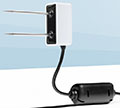
Everything you need. Nothing you don’t. The TEROS 10 is a ruggedized version of our basic, no-frills soil moisture sensor. Its 70-MHz frequency minimizes salinity and textural effects, making it accurate in most soil or soilless media. With a tough, epoxy body, the TEROS 10 is designed to withstand some of the harshest field conditions, which means problem-free measurements over the longevity of your research. In fact, we’re so confident about the long life of our TEROS sensor line, we’ve increased our standard warranty from one to three years.

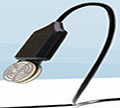
The TEROS 21 water potential sensor is incredibly easy to use. It requires no maintenance, and it’s accurate enough for most applications. In fact, the TEROS 21 provides an even more accurate soil moisture picture than measuring water content alone. A water content sensor only shows the percentage of water in the soil, but add a TEROS 21, and you’ll know if that water is available to plants and where it will move. Plus, unlike water content, matric potential isn’t dependent on soil type, so you can compare moisture between different sites. Not only that, the TEROS 21 is surprisingly affordable, especially when you consider it measures across a wide range, including dry values.

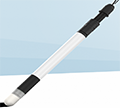
With the T5 Tensiometer, we put our 25 years of expertise to work in the smallest space possible: a ceramic tip with a surface area of only 0.5 cm2. The T5’s minor footprint allows major advantages over larger tensiometers such as very little soil disturbance and an incredibly fast response time. Not only that, because of its small size, it’s the only tensiometer in the world that can extend its measuring range. No more trying to handle selective measurements in the field or small samples with oversized tensiometers. The T5 is small enough and precise enough to perform excellent point to point measurement of water potential in even the tightest spaces.


HYDROS 21 is a low-cost, durable, and easy-to-use tool for monitoring EC, temperature, and depth in both groundwater and surface water. More importantly, it’s an all-in-one instrument. When used with the ZL6 data logger, you won’t require an additional sensor for measuring—and referencing—barometric pressure. With a range of 0 to 120 dS/m and a measuring depth of 10 m, the sensor makes accurate depth and EC measurements for a broad range of applications.

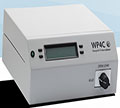
WP4C measures two key components of water potential (matric and osmotic) using fundamental thermodynamics and a finely-tuned calibration. Not only is this a first principles method that every other method gets calibrated from, but it’s also been published extensively. The WP4C measures water potential by determining the relative humidity of the air above a sample in a sealed chamber (conforms to ASTM D6836). Once the sample comes into equilibrium with the vapor, relative humidity is determined using the chilled mirror method. This involves chilling a tiny mirror until dew starts to form. At the dew point, the WP4C measures both mirror and sample temperature within 0.001 °C. This allows for unparalleled accuracy in the -0.1 MPa to -300 MPa range so you can have full confidence in sample readings.

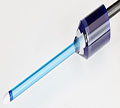
With the T5 Tensiometer, we put our 25 years of expertise to work in the smallest space possible: a ceramic tip with a surface area of only 0.5 cm2. The T5’s minor footprint allows major advantages over larger tensiometers such as very little soil disturbance and an incredibly fast response time. Not only that, because of its small size, it’s the only tensiometer in the world that can extend its measuring range. No more trying to handle selective measurements in the field or small samples with oversized tensiometers. The T5 is small enough and precise enough to perform excellent point to point measurement of water potential in even the tightest spaces.

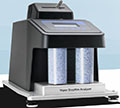
VAPOR SORPTION ANALYZER (VSA) is your simplest, most accurate option. It automates the entire process of soil-water characteristic curve construction in the dry region (-10 to -475 MPa) by accurately measuring simultaneously, at regular intervals, the water potential and the moisture content of a sample. No other instrument gives this much detail about soil in the dry range.

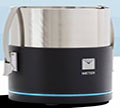
The HYPROP 2 takes only days vs. months to generate a soil water characteristic curve in the wet range, and it does this automatically. Use the HYPROP 2 together with the WP4C (which measures the dry range), and you can create full, high-resolution moisture release curves across the entire range of soil moisture. Nothing else is capable of doing that—not at this level of detail. On top of all that, we designed the HYPROP 2 to automatically determine unsaturated hydraulic conductivity on undisturbed soil samples placed inside a standard 250 mL sampling ring. Used in tandem with the KSAT, it can a generate a hydraulic conductivity curve for any soil type. The resulting instrument winds up saving you time, hassle and worry.

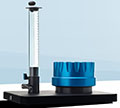
KSAT comes with everything you need to make a measurement, meaning you can set it up right out of the box. This type of integration also allows the KSAT to take up minimal bench space. But perhaps its biggest benefit is how, as part of the LABROS system, it complements the HYPROP. Both the HYPROP and the KSAT can use the same soil core because they share compatible sampling rings. This enables you to take saturated and unsaturated hydraulic conductivity measurements and generate a soil moisture characteristic curve to get a complete picture of a sample’s properties, simplifying both processes.

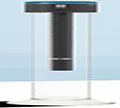
PARIO calculates the particle size distribution by Stokes’ law, with a range spanning from 63 μm to 1 μm, finally making it easy to obtain a complete particle size distribution curve, instead of just a few measurements at discrete time points. It allows for unattended, automated operation, with no interference by lab personnel. Just set it up and come back 8 hours later to a finished measurement with all the data you need.

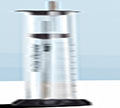
The Mini Disk Infiltrometer provides you with a better overall picture of your research site because it gives you more data for less time, effort, and money. Due to its incredibly easy setup and compact size, it’s ideal for making field measurements. You just pop it in your backpack with a bottle of water and take it absolutely anywhere. Thousands of scientists worldwide rely on the inexpensive Mini Disk Infiltrometer to understand complex problems such as hydrophobicity in soil, infiltration, irrigation system design, erosion hazard evaluation, and burn severity.

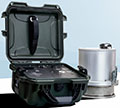
The SATURO dual head infiltrometer does almost everything for you. It’s fully automated and doesn’t require post-processing of data. Install the ring, connect the hoses, and push start. It’s that simple. The infiltrometer automatically measures infiltration rates, and the control unit calculates field saturated hydraulic conductivity (Kfs) on the fly. That means if you need a value right away, it’s there. If you want to dig deeper, you can always download the raw data.

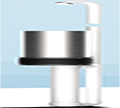
The Drain Gauge G3 allows you to deploy multiple units to cover a large area at an affordable cost. It’s an incredibly easy-to-use lysimeter that provides dependable monitoring of groundwater leaching, drainage, and recharge without the complexity of larger systems. This means you can instrument entire agricultural fields to better quantify variability. The G3 was deliberately engineered to be installed below the plow layer, so growers can perform normal operations directly over the instrument, which eliminates problems like edge effects. Plus, the Drain Gauge G3 can be combined with METER soil moisture sensors and precipitation gauges to estimate the total water balance more accurately than methods which only guess at deep drainage as a residual.

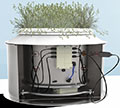
The Smart Field Lysimeter is more intelligent than other lysimeters. It’s the only system in the world with a bi-directional pump that automatically maintains true field conditions within the lysimeter. How? Field moisture (water potential) is measured and transmitted to the control center. If the soil in the lysimeter is drier than field conditions, water is pumped back into the lysimeter from the drainage reservoir. If the soil in the lysimeter becomes too wet, the pump pulls water out, ensuring true field conditions at all times. Plus, the Smart Field Lysimeter weighs both the lysimeter and the drainage barrel with a high-precision balance. Increases and losses of stored water are directly measured to the gram, making it one of the most accurate measures of precipitation, evapotranspiration, and deep drainage on the market.

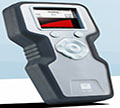
The new TEMPOS is different. We’ve ripped up everything in our thermal properties analyzer and reinvented it from the ground up to give you higher accuracy in much less time, at a price you can afford. How? Accurate thermal properties measurements have always been about complex mathematics. Recent scientific breakthroughs in how these complex equations are solved have enabled not only higher accuracy, but also allowed us to calibrate using significantly improved data sets—making this instrument more accurate than any other in its class. Not only that, improved proprietary algorithms enable the TEMPOS to make these measurements with an incredible one-minute read time (versus the usual 10 to15 min.).

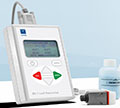
The SC-1 is simpler to use for a variety of reasons. It’s lightweight, so you won’t get fatigued carrying it around in the field (or around your neck, for that matter). What’s more, breakthrough steady-state technology means it doesn’t have any moving parts, making it easy and reliable to use. Plus, calibrations are simple to do, and readings can be displayed as either leaf vapor conductance or resistance and saved for downloading later (USB cable and utility software included).

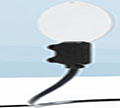
The PHYTOS 31 lets you know leaf wetness in no uncertain terms. It measures both the onset and duration of wetness on a simulated leaf, which in turn predicts when the onset of certain diseases or infections may occur. It’s not only a more accurate instrument, it’s also the easiest to set up, making it a simple and straightforward solution to several problems.

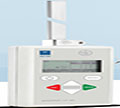
LP-80 Ceptometer is highly accurate way to determine canopy growth and canopy light interception, along with calculating fractional interception and crop coefficient. And because the methodology is mostly automated, it spares you from intensive hand labor, saving you time. The LP-80’s low cost also saves your entire budget from evaporating.

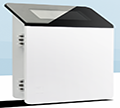
Max your paper output In the research world, success or failure hinges upon using data analysis to arrive at the right conclusion. Unfortunately, most data loggers force you to spend more time collecting data than actually analyzing it. With the advent of big data, you can’t afford to be constantly fussing with complex programming, installation headaches, data downloads, data gaps, or maintenance. You need a data logger that puts near-real-time data at your fingertips—whenever, wherever, and however you want it—so you can maximize your paper output. Welcome to the new ZL6 universe.

